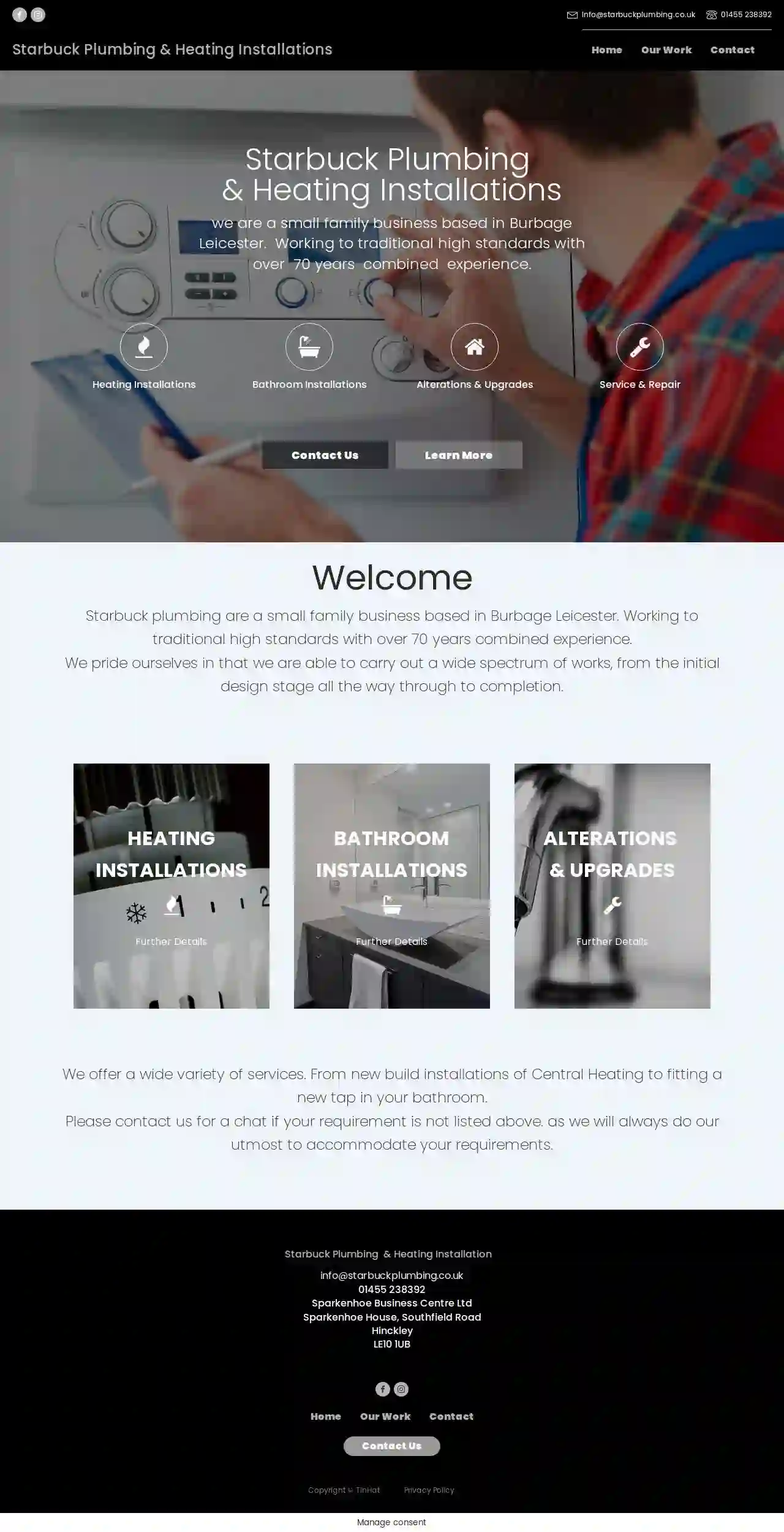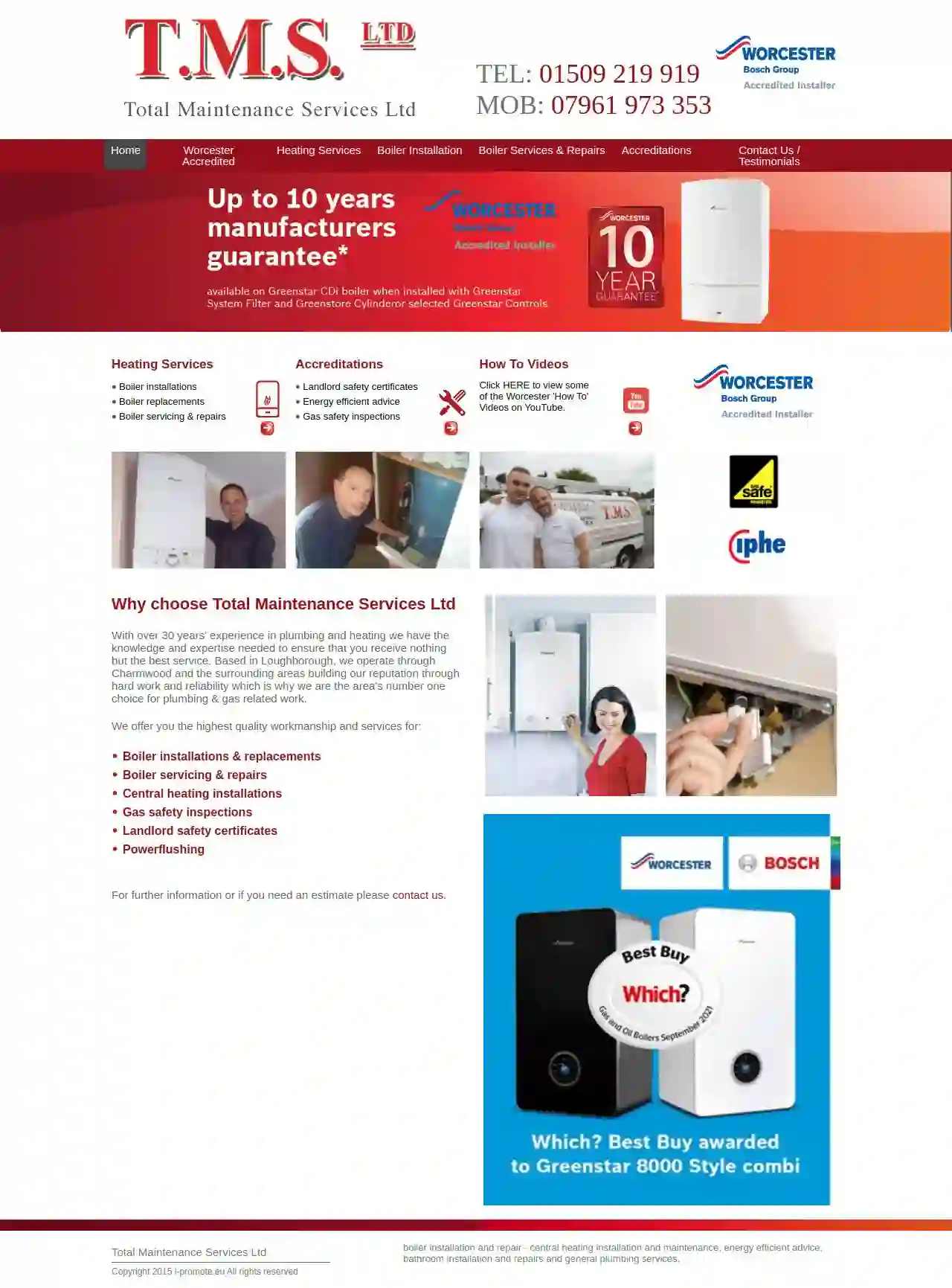Air Duct Cleaning Kegworth
Find the best HVAC Duct Cleaning in Kegworth
Receive multiple Air Duct Cleaning quotes for your project today! Compare profiles, reviews, accreditations, portfolio, etc... and choose the best deal.

Starbuck Plumbing
Sparkenhoe House, Southfield Road, LE10 1UB, GBStarbuck Plumbing & Heating Installations is a small family business based in Burbage Leicester. Working to traditional high standards with over 70 years combined experience. We pride ourselves in that we are able to carry out a wide spectrum of works, from the initial design stage all the way through to completion. We offer a wide variety of services, from new build installations of Central Heating to fitting a new tap in your bathroom. Please contact us for a chat if your requirement is not listed above, as we will always do our utmost to accommodate your requirements.
- Services
- Why Us?
Get Quote- Ph
Phoenix Plumbing & Heating Services
521 reviewsCoalville, GBThis is a placeholder description as the provided website content does not contain a detailed description of the business.
- Services
- Why Us?
- Gallery
Get Quote 
Total Maintenance Services UK Ltd
4.34 reviews44 Mayfield Drive, Loughborough, LE11 2EB, GBWith over 30 years' experience in plumbing and heating, we have the knowledge and expertise needed to ensure that you receive nothing but the best service. Based in Loughborough, we operate through Charmwood and the surrounding areas building our reputation through hard work and reliability, which is why we are the area's number one choice for plumbing & gas related work. We offer you the highest quality workmanship and services for: Boiler installations & replacements, Boiler servicing & repairs, Central heating installations, Gas safety inspections, Landlord safety certificates, Powerflushing. For further information or if you need an estimate, please contact us.
- Services
- Why Us?
- Accreditations
- Gallery
Get Quote
GalxC Cooling Midlands
Coalville, GB- Services
- Why Us?
- Gallery
Get Quote
The Service Guys
Central Road, Hugglescote, LE67 2FN, GBTHE SERVICE GUYS provide air conditioning, air conditioning service & installation, cellar cooling systems, service & installation. Based in the East Midlands, they are only a phone call away.
- Services
- Why Us?
- Gallery
Get Quote
Boiler Care Gas
4.524 reviews53 John Street, Hinckley, LE10 1UX, GBWelcome to Boiler Care, the affordable alternative to British Gas. Boiler Care Hinckley is a family run business that has operated in the Hinckley and Leicestershire area for over 35 years. We have a team of qualified engineers to carry out your requirements for boiler care, Central Heating installations, central heating repairs and all gas appliance installations and maintenance. We repair, service and maintain most gas equipment and have a gas appliance showroom for you to visit during opening hours. For an all round heating repairs and heating installation service we have the skilled and qualified heating engineers to assist you.
- Services
- Why Us?
- Accreditations
- Our Team
- Testimonials
- Gallery
Get Quote
ac electronics
4.7160 reviewsAshby Road, Loughborough, GBAt AC Electronics, we offer a comprehensive and affordable repair service for all your home electronics, from your TV to your Laptop. We've been serving the UK engineering industry for over 15 years. We can fix and repair Amplifier Heads, Temperature Controllers, Speed Controllers, Power Supply Units, Counters, Hopper Level Controls, Guide Sensors, Printed Circuit Boards, Control Panels and all other industrial and commercial electronics. Our shop is located on Ashby Road near the centre of Loughborough and we are open 9am - 5pm Monday to Saturday.
- Services
- Why Us?
- Gallery
Get Quote
The Boiler Doctor
52 reviewsHinckley, Leicestershire, 65 Seaforth Drive, LE10 0XJ, GBThe Boiler Doctor is a Gas Safe Boiler Specialist in Hinckley, providing boiler servicing, boiler repair, landlord certificates, and gas works. Our experienced engineers are Gas Safe registered and certified to safely work on gas appliances. We pride ourselves on turning up to appointments on time and strive to work at the highest standard, ensuring all work is completed to the highest standards. We can repair almost any boiler and aim to exceed expectations by ensuring all work is completed to the highest standards.
- Services
- Why Us?
- Our Team
- Gallery
Get Quote
PRP Air Conditioning Services
52 reviewsLoughborough, GBPRP Air Conditioning Ltd is a family-run business with over 20 years of experience in air conditioning installation, service, and remedial works. We have a proven track record of successfully tackling a range of residential, commercial, and industrial projects. Our team of qualified professionals is dedicated to providing our clients with the highest quality service and workmanship. Whether you need a new air conditioning system installed, your existing system serviced, or repairs carried out, PRP Air Conditioning Ltd is the company to call. We offer a wide range of services to meet your specific needs, and we are committed to providing you with a comfortable and energy-efficient environment.
- Services
- Why Us?
- Gallery
Get Quote
Meade Gas Services
3.73 reviews5 Hall Road, Burbage, GBMeade Gas Services is a family-run business operating in Hinckley and Lutterworth. We are an honest and reliable company offering quality plumbing, central heating installation, and boiler repair services. Our experienced plumbers are also Registered Gas Safe Engineers, specialising in boiler service, boiler repairs, and central heating installations. We pride ourselves on the level of service we offer to all our customers, and you can have total confidence in the work we carry out, as we are Gas Safe Registered. We cover Hinckley, Lutterworth, and surrounding areas, and our team is always on hand to offer professional advice and a free quotation at competitive rates. All of our work is 100% guaranteed, and we are certified with the Gas Safe Register to work with a range of commercial and domestic gas appliances and pipe work, including LPG Natural Gas installations.
- Services
- Why Us?
- Accreditations
- Our Team
- Gallery
Get Quote
Over 12,692+ HVAC Contractors on our platform
Our HVAC experts operate in Kegworth and surrounding areas!
HVACCompaniesHub has curated and vetted Top HVAC Companies arround Kegworth. Find the most trustworthy business today.
Frequently Asked Questions about Air Duct Cleaning
- Improved indoor air quality: Removes dust, allergens, and other contaminants, improving air quality.
- Reduced allergy and asthma symptoms: Helps alleviate symptoms for those with allergies or asthma.
- Enhanced HVAC system efficiency: Improves system airflow, which can increase efficiency and lower energy bills.
- Removal of unpleasant odors: Helps eliminate musty odors or pet smells trapped in ductwork.
- Extended HVAC system lifespan: Cleaning helps maintain system components and prolongs their lifespan.
What are the benefits of air duct cleaning?
Will duct cleaning damage my ducts?
How do I deodorize my air ducts?
Is air duct cleaning worth it?
What are the benefits of air duct cleaning?
- Improved indoor air quality: Removes dust, allergens, and other contaminants, improving air quality.
- Reduced allergy and asthma symptoms: Helps alleviate symptoms for those with allergies or asthma.
- Enhanced HVAC system efficiency: Improves system airflow, which can increase efficiency and lower energy bills.
- Removal of unpleasant odors: Helps eliminate musty odors or pet smells trapped in ductwork.
- Extended HVAC system lifespan: Cleaning helps maintain system components and prolongs their lifespan.